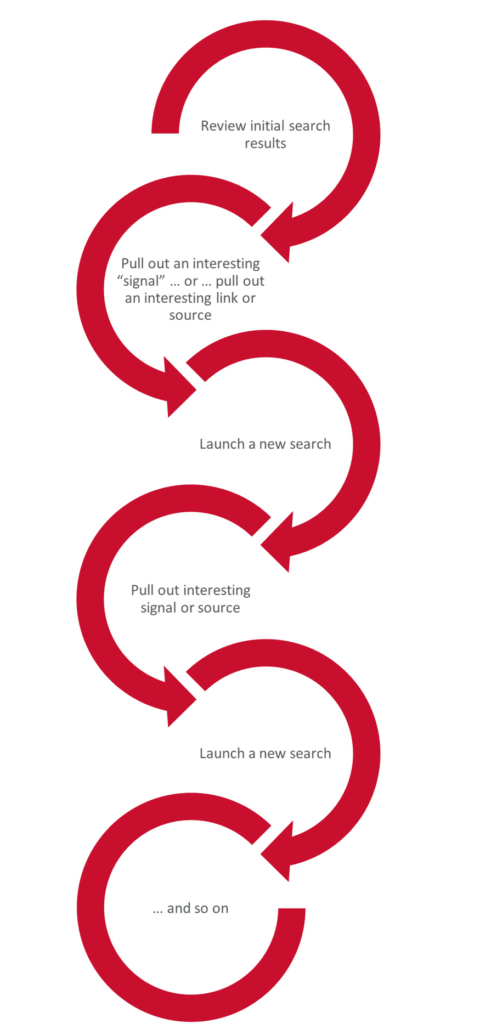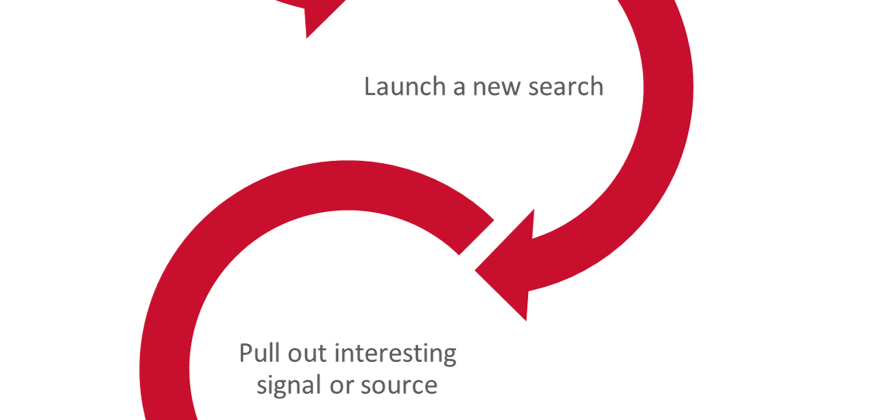I’ve been getting a lot of requests lately to “help us stretch our scanning.”

It’s something we’ve been thinking about for a while. In Spring 2018, we dedicated our annual Spring Gathering to “scanning the fringe.” We started playing with the idea of snowball scanning a few years ago. “Snowball Scanning?” I owe the thought to Dr. Oliver Markley who taught us snowball surveying…why not apply it to scanning. As we’ve been looking for ways to stretch our scanning, we’re using it more regularly now.
It can start with a simple search engine search: domain map category + futures-oriented search term. [We’re also playing with our terms and our sources, but we’ll save that for another time].
- Review the results
- Pull out:
- an interesting “signal” of change.
- an interesting source or link. Review the links and references from the initial results and pull out an interesting source
- Launch a new search
- Use a keyword from that signal to launch a new search
- Use the search terms on the interesting source/link
- Pull out (Repeat step 2 above)
- an interesting “signal” of change.
- an interesting source or link. Review the links and references from the initial results and pull out an interesting source
- Launch (repeat step 3 above)
- Continue as long as practical and/or useful
An observation I have from doing Snowball Scanning in particular and scanning in general is that it takes time to do it well. The approach here is more aimed at an ongoing scanning system than a project-based scan. There is a point in ongoing scanning where the so-called low-hanging fruit has been picked and it gets tougher to find useful weak signals. I suspect many readers/scanners are already doing some form or this. Be glad to hear you experience (please save the “my automated scanning system can pull up a million hits in two seconds” – different topic). – Andy Hines

where are you getting these requests? you clearly don’t spend much time here…
Hello Andy
This approach seems a simple yet iterative approach for helping to identify outliers and weak signals – something that would help participants in a foresight workshop easy to engage with and as a precursor to identifying key input variables and drivers.
I’ve also used the concept of “Distance Analysis” developed from Bob Ayres” concept of Morphological Distance in his 1969 book Technological Forecasting.I’ve developed software to help identify outlier/weak signal viable scenario configurations at major variance from known-known/anchor configurations. If you’d like a demo then I could show you via zoom at your convenience.